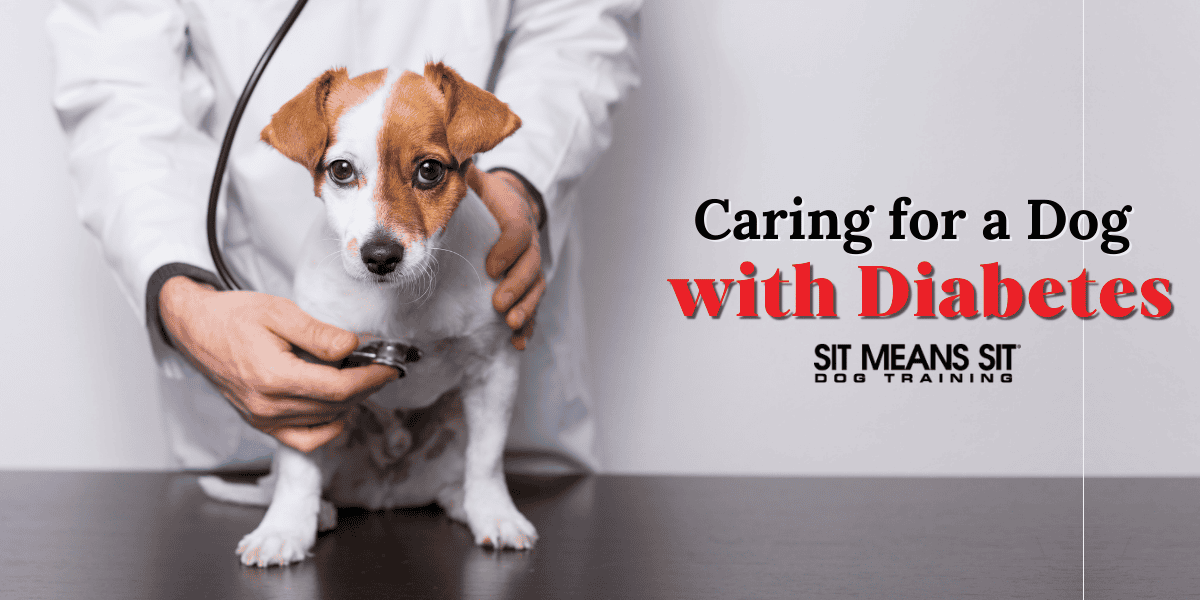Whether your pup is newly diagnosed with diabetes or you’re just looking for tips, understanding how to support their health is the first step. From recognizing symptoms to setting up a feeding and insulin routine, here’s what you need to know to help your dog feel their best.
What Is Canine Diabetes?
First of all, what is canine diabetes? Diabetes in dogs happens when their bodies can’t properly manage blood sugar levels. There are two main types, and knowing the difference can help you understand your pup’s diagnosis.
Type 1 Diabetes in Dogs
Type 1 diabetes is the most common type seen in dogs. In this form, the pancreas stops producing insulin altogether, often because of damage from inflammation or an immune issue. Since the body can’t make insulin on its own, dogs with this type will need lifelong insulin therapy. It might sound overwhelming at first, but most pet parents quickly get into a routine, and their dogs often adjust very well.
Type 2 Diabetes in Dogs
Although it’s possible for dogs to have type 2 diabetes, it’s much rarer. In these cases, a dog’s body still makes some insulin, but the cells don’t respond to it as they should. This form is often tied to obesity and other health conditions. Even though it’s not common in dogs, helping your pup maintain a healthy weight can reduce their risk of complications and keep them feeling their best.
Signs Your Dog May Have Diabetes
Early symptoms of diabetes can be easy to miss, so it’s important to pay close attention to changes in your dog’s habits. Increased thirst and urination are often the first red flags. You might also notice your dog losing weight even though they seem hungrier than usual. Other signs can include fatigue, dehydration, or cloudy eyes.
If you notice your furry friend having these symptoms, you should check in with your vet. Catching diabetes early makes it much easier to manage and helps prevent serious complications down the road.
Monitoring Your Dog’s Blood Sugar
After your dog is diagnosed with diabetes, your vet will walk you through how to monitor their blood sugar. Some dog owners track it at home using urine strips or special sensors, while others rely on periodic blood tests at the vet’s office. In some cases, a small device can be worn on the skin to track glucose levels throughout the day.
Whichever method you use, keeping an eye on your dog’s numbers helps your vet adjust their insulin dose as needed. It’s also a good idea to watch for changes in behavior. If your dog ever seems confused, weak, or very tired, their blood sugar could be too low, and you’ll want to call your vet right away.
Set Up a Feeding Routine
One of the most important parts of managing diabetes is sticking to a consistent feeding schedule. That means giving your dog the same food, in the same amount, at the same time every day. Doing this helps balance their blood sugar and makes it easier to time meals with their insulin shots.
Many diabetic dogs do well on prescription diets that are high in fiber and lower in fat. These types of food help keep blood sugar levels steady. Besides meals, small, healthy treats like broccoli or cucumber slices can be a good addition. Just be sure to check with your vet before making any changes to your dog’s diet.
Keep Your Pup Active
Regular activity helps diabetic dogs in more ways than one. It supports a healthy weight, improves how their body uses insulin, and helps keep their blood sugar levels steady. There’s no need to go overboard when planning activities for dogs with diabetes, though. Daily walks or some backyard playtime are often enough to keep these pups in a healthy shape.
It’s also important to keep their activity level fairly consistent from day to day. Sudden bursts of intense exercise or skipping walks altogether can throw off their blood sugar balance. If your dog needs to lose a little weight, your vet can help you come up with a safe plan to do so gradually.
Caring for a dog with diabetes takes a little extra time and planning, but it quickly becomes second nature for most dog parents and pups. With a consistent routine, proper care, and lots of love, your dog can still enjoy their life to the fullest!

